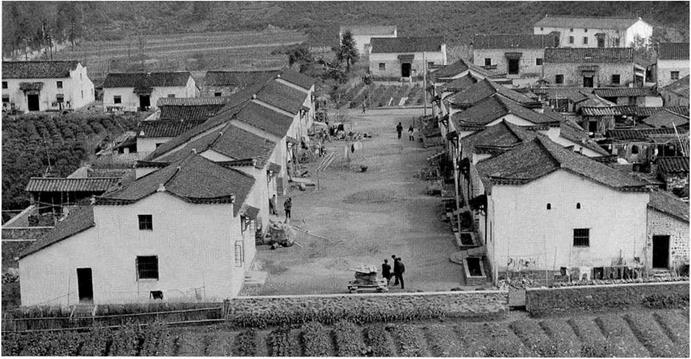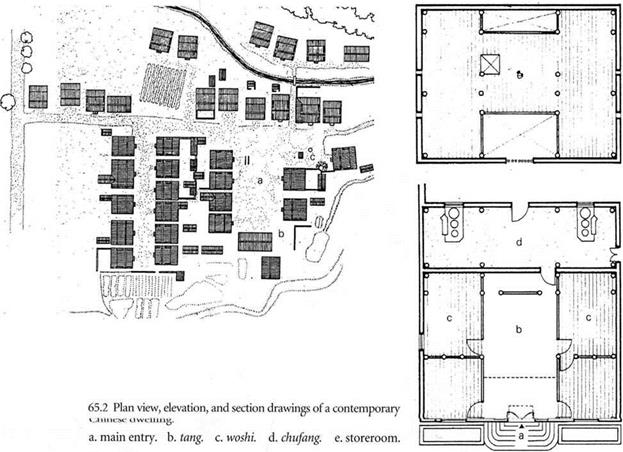An overall look at the compositional structure of the Beijing siheyuan and Huizhou dwellings, along with documentation from surveys into various Huizhou customs indicates that while the siheyuan may be their prototype, Huizhou dwellings formed independently in response to central China’s Jiangnan climate.
The tianjing is a particularly good example of an adaptive feature that arose independently. “Private” space is condensed into the woshi, and “communal” space into the tang and tianjing—the tang is interior and the tianjing the exterior extension of that communal space. Though it serves as a very ordinary open-air living room, the tianjing is functionally highly sophisticated. It provides necessary ventilation and light that the closed, high surrounding retaining walls would otherwise shut out. This space is clearly not intended to be an object of admiration. It contains no elements of Chinese garden composition as seen in the ting yuan (contemplative landscape gardens) which developed into the yuanlin (landscape park gardens) that were constructed outside the residential compound. This is not to say that there are no objects for admiration in the
|
65.1 View and ground plan of a contemporary Chinese community, a. communal plaza work space. b. communal storehouse. c. water tower. |
|
|
|
|
courtyard—bonsai, tray landscapes and rocks are displayed there. They too are an extension of the decorative objects displayed in the interior tang.
The word “ ting” has been used in China since ancient times to refer to a nearly square, vacant space between buildings. According to the Later Han-dynasty (a. d. 25- 220) dictionary Shuo wen by Xu Shen, “the ting lies within the palace confines,” and in the Song-dynasty 960-1279) text Yu hai by Wang Ying-lin, “the area extending from beneath the tang to the gate is called the ting.”’ Today this space is called yuanzi in the north and tianjing in the south. By definition, the ting is an open area within the residential complex; it is not a garden, but rather an open – roofed living space.
Clearly, the garden as an object of appreciation and contemplation did not evolve in China from the exterior courtyard space within the residential compound. The formative process of the garden was totally different in China than in Japan, where gardens always developed together with residences as a unified whole.
___________________________________________________________________________________






